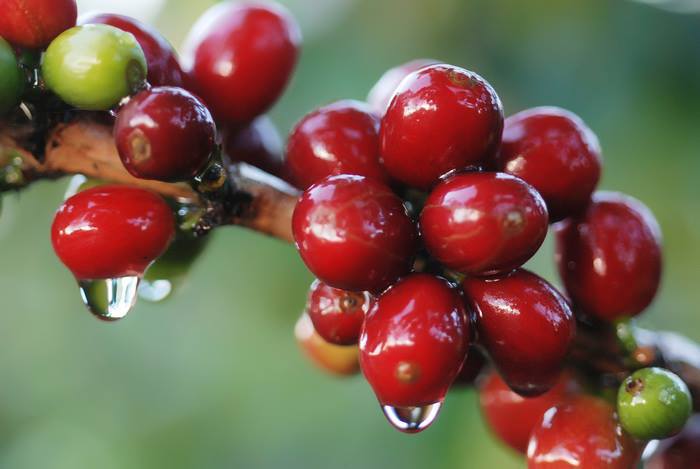There is a saying in Cuba that if a person gets up early, they get God’s help… there is nothing better like a cup of coffee during a nice sunrise which is a perfect start to a working day and it doesn’t matter if it’s for a common worker or for a person who cultivates the soil and is called a peasant. The coffee that comes from a field and is sowed in the soil in Cuba is called Arabic coffee and Robusta coffee. Those types of coffee are the most famous ones and they are almost blind by every step during the dawn arrival with their aroma, smell and fragrance which is so peculiar
and also so recognizable.
Contents

What does a cup of coffee mean to the Cuban people?
Coffee is not a drink. In fact, it is but it is more like a liquid that enters through your mouth. But still, it is not a drink. In Cuba, there is nobody who drinks coffee because they are thirsty. It is a habit, it is a part of our culture. Drinking coffee is like breathing. The first thing which you say to someone who comes to your house is “hola” and the second question is “do you want a cup of coffee”? When you have a child you can give him a coffee if he wants. When the children swallow a gulp of coffee they feel like their moms and dads. Next, your soul flies out of your body when your own children prepare you a cup of coffee. If you don’t know a person and meet them for the first time, you drink coffee. People can ask you when they are not sure “with or without sugar”? and you can respond “as you drink it”. A cup of coffee drunk among friends is nothing more and nothing less but a demonstration of different values. It shows respect for the old times and for the acts of talking and listening. It creates friendship, it is the sensitivity of the universe when the water spurts up with this unforgettable aroma for each and every single person.
About Arabica and Robusta
Coffee The first thing which must be clarified is a basic thing – both arabica and robusta coffee come from the coffee family of Rubiaceae so they both are from the same botanic family. However, they are not like siblings, they aren’t identical. They are classified into different subspecies – on the one hand, the plant is called Arabic coffee and on the other hand, it is
called Canephora coffee. They grow in different places and with different requirements and that is why they produce different fruits. We are talking now about the difference between sour and sweet taste.
Canephora is a scientific name for a type of grain which is known as robusta. But we can’t forget that there are many more varieties in the international coffee market. Canephora and arabica types are the principal ones but they
also have subcategories. Maybe you have already heard about bourbon or Caturra names. The arabica type of coffee has around seventy varieties with different properties. Cultivation and its myths about production It may be because arabica is the synonym of coffee. But I think that all the story that hovers around this topic must be a different thing. Keep in mind the promise of quality, luxury and demanding cultivation of Arabic coffee.
Here are the myths:
Arabic coffee is the first coffee with a long tradition. The plant was discovered in the 7 th century and since then it has been used. Everything that has a relation with the tradition of Viennese coffee and similar stories are based on Arabic coffee. That is why this type of coffee already has an advantage in
publicity.
The plant grows only in high zones, between 600 and 2300 meters. It seems very cautious, right? The higher the zone is the slower and more complicated is the process of getting ripe when it comes to the fruits’ aroma. It must be added that also the higher is the zone, the smaller is the cultivation area and also the harvest. The deficiency in the ground is the fundamental reason for the higher prices of this type of coffee. In order to get ripe, the coffee fruit must grow not in the heat neither in the cold. In spite of the fact that the climate changes are getting more and more habitual, the perfect weather to obtain a generous harvest is not anymore so important and it has significance only in some determined places.
The air’s humidity must be very high. This condition is valid only in some determining regions on Earth. Deserts, as well as too cold areas, are not suitable to cultivate Arabic coffee there. Harvest is realized individually and manually and it depends on how ripe the fruit is in precipitous and inaccessible areas. Manual factor has its cost – temporal, personal when it comes to harvest’s reserves and finally when it comes to the client. What concerns the workers is a different topic.
Direct sunlight is prohibited. The majority of Arabic grains grow in the shade. But in the mountains, it is very difficult to find it. The higher the plantation is
the higher is the sun intensity. That is why the potential harvest is considerably
decreased.
When you look at these six points you will understand why the Arabic grain have so good publicity.
-high demands when it comes to cultivation
-limited cultivation possibilities
– only some areas are suitable to grow coffee there
-harvest is difficult, is made by hand and that is why it has handicraft values
I’m sure that when you finish reading this text you will make yourself a cup of
coffee and you will think about our beautiful country of Cuba.

